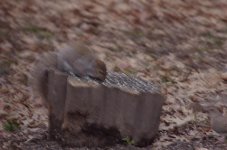manbehindthemask
Active member
I recently bought a canon compact with a cmos sensor to use for digiscoping. However the video (through the scope) has an annoying wobble effect. This isn't apparent when using the camera on its own, so must be an effect which is accentuated when under high magnification. I recently read that wobble is something common to cmos sensors. My old samsung had a ccd sensor and that never displayed any wobble. Should I avoid cmos sensors from now on for videoing through scope? Are there any that dont wobble? thanks





